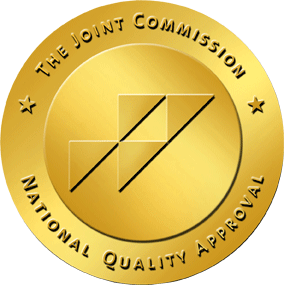Codeine Addiction
Codeine addiction often begins with a legitimate prescription for pain and escalates to drug-seeking behaviors. This typically occurs in people who already have risk factors for addiction. You don’t need to be taking codeine for a long time to develop a dependence and addiction to it, especially if you’re using large amounts of the drug regularly. Other times, people were never prescribed codeine, and began using it with the intention of getting high.
About Codeine
Codeine is an analgesic opioid commonly prescribed to treat pain and cough symptoms. A direct derivative of the opium poppy plant, codeine is used medically to treat mild to moderate pain. The most well-known form of codeine is cough syrup, but the drug also comes in pills and capsules. People who abuse codeine often do so by sipping on a drink called lean, made popular in the southern hip-hop scene during the 1990s. Lean is a combination of prescription-strength codeine cough syrup, soda, and hard fruit-flavored candy. Lean can also be made using alcohol instead of soda, and it goes by many other names on the street, including:
- Purple Drank
- Sizzurp
- Purple Jelly
- Dirty Sprite
Lean users typically sip on it throughout the day, becoming more intoxicated with every passing hour. As they continue to sip, they need to lean on things to stand upright. This is where the drink got its name. Abusing codeine in a liquid or pill form is extremely dangerous and presents serious risks to users.
Although it is an addictive prescription opioid, codeine is not as strong nor as frequently prescribed as other synthetic opioids like oxycodone or hydrocodone. Codeine is often formulated with acetaminophen or antihistamines to treat pain. Drugs that contain codeine range in DEA Scheduling from II to V under the Controlled Substances Act. Scheduling depends on the amount and potency of codeine in the drug. Codeine is prescribed for short periods to treat symptoms because long-term or reckless use of any opioid can lead to dependence and dangerous drug abuse risks.
Signs of Codeine Addiction
Codeine dependence occurs as your tolerance increases and you abuse larger quantities of the drug. Once dependence develops, it’s hard to control when or how much you use. Some of the most devastating consequences of an addiction to codeine, or any substance, is the behavior changes that damage your health, relationships, and quality of life. If you’re addicted to codeine, you may:
- Take more codeine than prescribed or use it for non-medical reasons.
- Ask your physician for stronger or higher quantities of codeine.
- Go “doctor shopping,” or seek prescriptions for codeine or other opioids from multiple providers.
- Take codeine from others who have legitimate prescriptions.
- Purchase codeine or other opioids from black market sources like dealers and illegal online pharmacies.
- Use codeine recreationally at any time, for any non-medical reason.
- Use alcohol or other drugs to enhance the euphoria or intoxicating effects of codeine.
- Become preoccupied with taking codeine, obsessing over the time of the next dose, or constantly worrying about how many pills or liquid is left.
- Start missing work or school or having poor performance at either.
- Withdraw from friends, family, and activities you one enjoyed.
- Get into legal or financial trouble due to prescription drug abuse or illicit drug abuse.
- Continue to abuse codeine despite negative consequences to your health and life.
Like all opioids, codeine dependence is physical and psychological. As the brain adjusts to functioning normally under the influence of codeine, you build up a tolerance making more codeine necessary to achieve the desired effect. As tolerance to codeine becomes the new normal, you experience withdrawal symptoms without the drug. Tolerance is not the same as dependence, but it is part of developing dependence. Dependence is a natural response to taking any substance over a prolonged period. It can occur even if you use codeine as prescribed. Someone who drinks soda or coffee every day, then suddenly stops, will likely experience mild forms of withdrawal. The same is true for codeine and other drugs of abuse, only withdrawal symptoms are much more severe.
Codeine Withdrawal Symptoms
Codeine withdrawal is usually not life-threatening, but it can be very uncomfortable and unpleasant. The severity of codeine withdrawal symptoms varies, depending on the nature of your use and individual makeup. The most common symptoms include:
- Runny nose
- High fever
- Excessive yawning
- Diarrhea
- Muscle and body aches
- Nausea and vomiting
- Abdominal pain
- Anxiety
- Insomnia
- High blood pressure
- Increased heart rate
- Cold sweats
- Intense cravings
- Agitation
Some symptoms can linger for several days or weeks after codeine detox. These symptoms may include:
- Insomnia
- Intense cravings
- Anhedonia (inability to feel pleasure)
It is often these lingering symptoms that are the main factors in relapse.
Effects of Codeine Abuse
Codeine may be less potent than many synthetic opioids, but it’s still an opioid and carries a high risk of abuse and dependence because of its effects. Some common symptoms of codeine include the following:
- Respiratory depression
- Lightheadedness
- Dizziness
- Nausea and vomiting
- Sweating
- Sedation
- Constipation
- Shortness of breath
- Abdominal cramps
Effects of codeine use may vary by individual, but misusing it increases tolerance to codeine’s effects, which means higher quantities are necessary for the same effect. There’s an additional risk associated with growing tolerance to codeine. Since codeine is commonly formulated with other drugs like acetaminophen, extensive use of these combination drugs increases the risk of liver damage caused by acetaminophen.
Codeine is an opioid, which means it presents serious health risks in excessive amounts. The expected effects of codeine use can be dangerous, but the consequences of overdose can be deadly. There’s no way to know which pill or sip of lean will cross the line to a potentially fatal overdose. Some signs and consequences of codeine overdose include the following:
- Constricted (pinpoint) pupils
- Confusion
- Loss of consciousness
- Labored or no breathing
- Lightheadedness
- Itching
- Cold or clammy skin
- Coma or death
Codeine overdose is more likely to occur when it’s taken non-medically and in a compulsive manner. In addition to the above-listed effects of codeine overdose, a serious risk of codeine abuse is an addiction, which is virtually inevitable with continued abuse of the drug.
How Do You Treat Codeine Addiction?
Codeine addiction is dangerous, and if you are caught in its vicious cycle, you may feel hopeless at times, but there is help.
Detoxing From Codeine
Since codeine is an opioid, the first step in addiction treatment is medical detox. This should always take place under the care of medical professionals. The best codeine detox process provides medical assistance and supervision to reduce severe withdrawal symptoms like high blood pressure, insomnia, severe anxiety, and abdominal pain.
There are a few ways to detox from codeine and other opioids, but the two most common are medication-assisted treatment (MAT) and medically supervised detox in a drug rehab center. Although both are effective, they’re different in process and results.
Medication-assisted treatment does not fully detox you from opioids. Rather, MAT uses methadone or buprenorphine to maintain a steady level of opioids for the opioid-dependent brain. You’ll transition from codeine or another opioid of abuse, to a dosage of drugs like methadone or buprenorphine. This helps you avoid some of the discomfort of opioid withdrawal.
A medically supervised detox fully eliminates all opioids from your system during a multiple-day process. The length of time varies, depending on the severity of substance abuse. Controlled medications and trained medical staff ensure detox is safe and as comfortable as possible by easing the severity of painful withdrawal symptoms.
Addiction Treatment for Codeine Abuse
Codeine addiction changes the way your brain functions. In addiction recovery from codeine addiction, there’s a period of readjustment to the absence of codeine. This readjustment period is often the most difficult time. Cravings can be the strongest and most frequent, making you vulnerable to relapse if you haven’t established a strong foundation for recovery yet.
To prevent relapse, an individualized addiction treatment program provides the tools, information, support, and skills for long-term recovery. At a codeine addiction treatment center, you’ll gain self-awareness, resilience, and education and tools for relapse prevention. Substance use disorder treatment helps you:
- Identify and effectively avoid or manage relapse triggers.
- Find activities and eating habits that promote a sober, healthy lifestyle.
- Learn stress management and coping skills.
- Address underlying issues that may have contributed to drug addiction.
- Gain support in sobriety through groups and peers in recovery.
- Address destructive activities that may trigger relapse.
The time you need to stay in addiction treatment depends on your individual circumstances. The National Institute on Drug Abuse (NIDA) recommends at least 90 days of treatment for best results. The recommended course of addiction treatment gradually steps down the intensity of treatment through these levels of care:
- Detox: Highly structured and supervised to keep you safe, prevent relapse, and prepare your mind and body to do the work of recovery in a drug addiction treatment program.
- Inpatient or Residential Treatment: A high-intensity treatment program where you live in a drug-free treatment facility with peers, receive supervision, and engage in planned daily activities.
- Partial Hospitalization Program: You attend treatment at a drug rehab center during the day and live at home or in a sober-living residence.
- Outpatient Programs: Most people begin in an intensive outpatient program (IOP) that meets several hours a week and eventually transition into outpatient treatment, meeting just 1-3 hours a week.
- Sober Living: A drug-free living environment for people who’ve already completed residential or inpatient treatment. A sober-living house requires you attend outpatient treatment, work, or school during daytime hours with regular drug testing and structured curfews and recovery meetings.
As NIDA recommends, the longer you remain in treatment at any level of care, the greater your chances of sustained recovery.
Does Insurance Cover Codeine Addiction Treatment?
Coverage for substance use treatment varies by insurance plan. Most major insurance providers and plans are legally required to pay for treatment for behavioral health issues in similar ways they do medical conditions. Some insurances require that you see an in-network provider for the greatest level of coverage or meet a deductible before they begin paying the full cost of addiction treatment. Our admissions staff can help you with insurance verification. We’ll work directly with your provider to determine your benefits and any out-of-pocket costs.
Codeine Addiction Treatment at Vogue Recovery Centers
At Vogue Recovery Centers we draw on a blend of traditional addiction medicine and holistic treatments that address the physical, mental, and spiritual issues around addiction. We have specialized training in treating underlying issues like trauma and co-occurring disorders. Our staff provide thorough medical and behavioral assessments so that we can create a personalized treatment plan that addresses your specific treatment needs. Our therapies and approaches vary by location and substance use disorder treatment program, but may include:
- Individual therapy
- Group therapy
- Family therapy
- Dual diagnosis treatment
- Trauma therapies like EMDR
- Art therapy
- Music therapy
- Yoga
- Fitness
- Nutrition counseling
- Medication-assisted treatment (MAT)
- 12-steps and 12-step alternatives
Vogue offers locations in Arizona, California, and Nevada. We provide inpatient treatment as well as partial hospitalization and other outpatient levels of care. All of our drug and alcohol addiction treatment centers are Joint Commission certified.
Don’t Wait to Get Help
If you or a loved one is struggling with codeine addiction, don’t put off treatment. Without professional help, drug and alcohol abuse gets more serious, and more dangerous. Call our compassionate admissions team today for a free, confidential consultation.
References
- https://bmjopen.bmj.com/content/9/4/e025331
- https://www.deadiversion.usdoj.gov/schedules/orangebook/c_cs_alpha.pdf
- https://www.drugabuse.gov/publications/principles-drug-addiction-treatment-research-based-guide-third-edition/drug-addiction-treatment-in-united-states/types-treatment-programs
- https://www.ncbi.nlm.nih.gov/books/NBK526012/
- https://www.drugabuse.gov/drug-topics/opioids

Medically Reviewed by Vaun Williams, Psy.D., LPC


